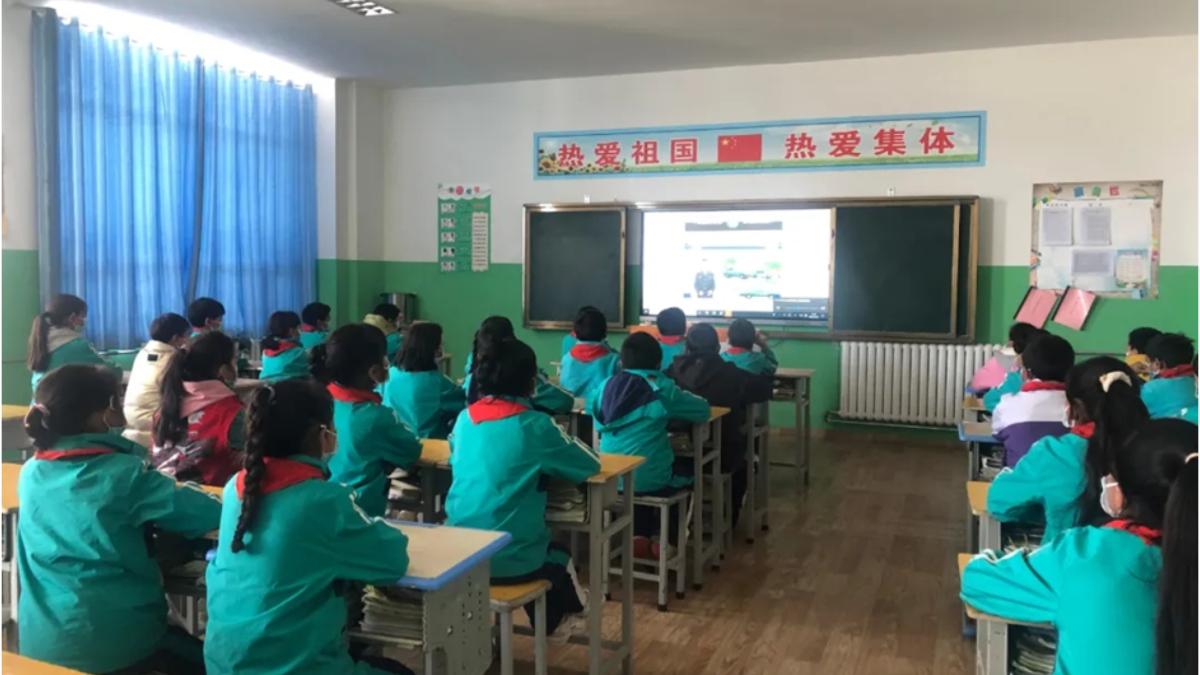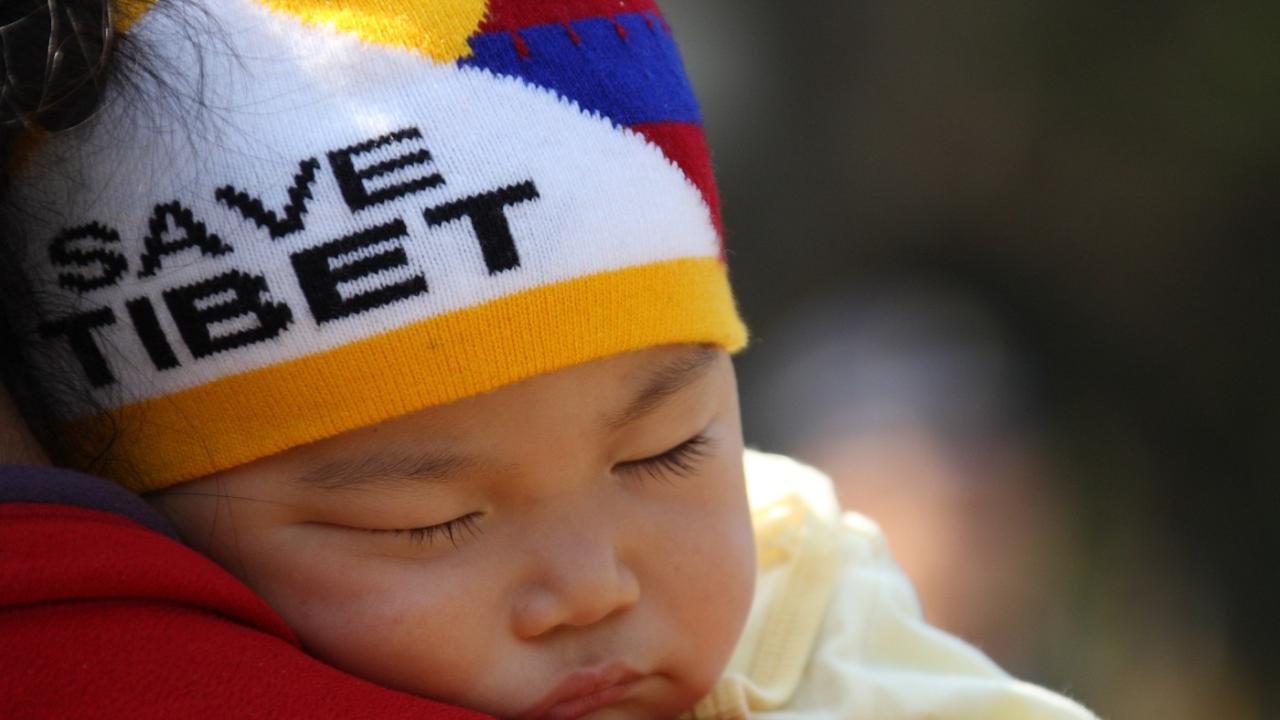
Why China Takes Young Tibetans From Their Families
Why China takes young Tibetans from their families is a complex and deeply troubling question. It’s a story woven from threads of historical policy, governmental programs, and the lived experiences of countless individuals. This isn’t just about numbers or statistics; it’s about the heartbreaking separation of children from their loved ones, a practice steeped in political motivations and cultural clashes.
We’ll delve into the historical context, examine current policies, and hear directly from those impacted by these actions.
Understanding this issue requires examining the long history of Chinese rule in Tibet, including the evolution of policies towards Tibetan children and families. We’ll explore the role of boarding schools, often far from family homes, and analyze the socioeconomic factors that make these separations more likely. This isn’t simply a matter of education; it’s about cultural preservation, assimilation, and the struggle for self-determination.
Governmental Policies and Programs: Why China Takes Young Tibetans From Their Families

The Chinese government’s policies regarding Tibetan children are complex and often shrouded in secrecy, making objective analysis challenging. Official statements emphasize modernization, national unity, and improved living standards, yet independent reports frequently paint a different picture, highlighting concerns about cultural assimilation and the erosion of Tibetan identity. Understanding the stated aims of these policies alongside their reported outcomes requires careful consideration of multiple perspectives.
Chinese governmental policies concerning Tibetan children are framed within broader national strategies for education and social development. These policies aim to integrate Tibetan communities into mainstream Chinese society, often prioritizing economic development and national unity over the preservation of distinct Tibetan cultural practices. While official rhetoric focuses on providing equal opportunities and improving the lives of Tibetans, the implementation of these policies has been subject to criticism from human rights organizations and international observers.
Education Policies for Tibetan Children
The Chinese government invests heavily in education in Tibet, aiming to improve literacy rates and provide access to modern skills. This includes the establishment of schools across the region, offering both primary and secondary education. However, the curriculum emphasizes Mandarin Chinese language instruction and often marginalizes Tibetan language and culture. This has led to concerns about the suppression of Tibetan identity and the erosion of traditional knowledge.
Many schools are staffed with teachers from other parts of China, leading to a disconnect between educators and students’ cultural background. Boarding schools, often located far from children’s homes, have become a focal point of controversy, with allegations of forced separation from families and cultural assimilation.
Welfare Programs for Tibetan Children
Government welfare programs in Tibet are designed to address poverty and improve living conditions. These initiatives include programs aimed at providing healthcare, nutrition, and social support. However, the effectiveness and accessibility of these programs are often questioned, with concerns about unequal distribution of resources and limited impact in remote areas. Access to healthcare, for example, may be limited due to geographical challenges and insufficient medical facilities.
Similarly, the provision of nutritional support might not be sufficient to address the unique dietary needs and cultural practices of the Tibetan population.
Examples of Programs and Initiatives, Why china takes young tibetans from their families
One example is the widespread implementation of Mandarin-language education in Tibetan schools. The stated aim is to improve economic opportunities for Tibetan children by providing them with skills needed in a modern, increasingly interconnected world. However, the reported outcome, according to many independent sources, includes a decline in Tibetan language proficiency and a weakening of cultural transmission. Another example is the establishment of vocational training centers.
The stated goal is to equip Tibetan youth with job skills, leading to improved employment prospects. Reported outcomes vary, with some reports suggesting success in specific areas, while others highlight limitations in job placement and the relevance of training to the local economy. Finally, government-sponsored healthcare initiatives aim to improve access to medical services. While some progress has been made, reported outcomes show that significant disparities persist in healthcare access between urban and rural areas, with remote communities often underserved.
| Program Name | Stated Goal | Target Population | Reported Outcomes |
|---|---|---|---|
| Mandarin Language Education | Improve economic opportunities through language skills | Tibetan children | Declining Tibetan language proficiency, cultural assimilation |
| Vocational Training Centers | Equip youth with job skills | Tibetan youth | Varying success rates, limitations in job placement |
| Government-Sponsored Healthcare | Improve access to medical services | Tibetan population | Unequal access, disparities between urban and rural areas |
The Role of Boarding Schools

The widespread establishment of boarding schools in Tibetan areas under Chinese administration is a significant aspect of the region’s socio-political landscape. These schools, often located far from students’ homes, play a crucial role in shaping the lives of young Tibetans, impacting their education, cultural identity, and overall development. Their presence and function are intertwined with broader governmental policies aimed at integrating Tibetan society into the larger Chinese framework.The prevalence of these boarding schools is considerable, with many rural communities seeing a significant portion of their children enrolled.
This high enrollment rate, while presented by the government as an opportunity for improved education and social mobility, raises concerns among some regarding the potential disruption of traditional family structures and cultural transmission.
Educational Curriculum and Daily Life in Boarding Schools
The curriculum in these schools generally follows the national Chinese education standards, emphasizing Mandarin language proficiency, science, mathematics, and other subjects aligned with the Chinese national curriculum. However, the extent to which Tibetan language and culture are integrated varies. While some schools incorporate Tibetan language classes, the overall emphasis is on Mandarin, leading to concerns about the erosion of Tibetan linguistic and cultural heritage.
Daily life in these boarding schools is often regimented, with strict schedules for classes, meals, study, and limited opportunities for leisure activities outside of structured programs. Students often live in dormitories with many other children, fostering a sense of community but also potentially limiting individual attention and privacy.
Comparison of Experiences: Boarding Schools vs. Family Homes
Children raised in boarding schools experience a vastly different upbringing compared to those raised in their family homes. Family homes offer a more intimate setting, allowing for close familial bonds, cultural transmission through storytelling and traditions, and individualized attention. In contrast, boarding schools provide a more structured and standardized environment, often lacking the personalized care and cultural richness found in family homes.
This difference can impact the development of social skills, emotional well-being, and cultural identity. The separation from family can lead to feelings of homesickness and emotional distress for many children, particularly in the younger age groups.
Advantages and Disadvantages of Boarding Schools
The advantages and disadvantages of these boarding schools are perceived differently by various stakeholders.
It’s crucial to understand that the following points represent reported perspectives and experiences, not universally held truths.
- Parents:
- Advantages: Access to better educational opportunities (perceived or real), potential for improved social mobility for their children, relief from the burden of childcare, particularly in rural areas.
- Disadvantages: Separation from their children, concerns about the children’s well-being and cultural identity, limited communication and visitation opportunities, financial burden of supporting their children at school.
- Children:
- Advantages: Access to education, exposure to new experiences and people, opportunities for personal growth, friendships with peers.
- Disadvantages: Homesickness, feelings of isolation and loneliness, strict discipline and limited freedom, potential cultural alienation, lack of parental support and guidance.
- Government:
- Advantages: Promotion of national unity and integration, standardization of education, increased literacy rates, improved access to education in remote areas, potential for economic development through a skilled workforce.
- Disadvantages: Potential for cultural assimilation and loss of traditional values, criticism from international human rights organizations, challenges in managing large-scale boarding school systems, potential for negative impacts on children’s well-being.
The forced separation of young Tibetans from their families is a human rights issue demanding international attention. While the Chinese government presents its actions as educational initiatives, the reality is far more nuanced and often deeply damaging. The testimonies of those affected, the lack of transparency, and the ongoing international concern paint a picture of a systematic policy with profound and lasting consequences for Tibetan families and their cultural heritage.
Understanding the complexities of this situation requires empathy, critical analysis, and a commitment to holding those responsible accountable.
China’s forced assimilation policies in Tibet see young children separated from their families, a heartbreaking reality often ignored in the West. It’s a complex issue, and honestly, trying to understand the full picture feels a bit like reading Boris Johnson’s memoir – a chaotic mess of half-truths and self-serving narratives, as highlighted in this article: boris johnson shows how not to write a political memoir.
The lack of transparency surrounding these separations only deepens the tragedy for the Tibetan people.
China’s forced assimilation policies in Tibet often involve separating young children from their families; it’s a heartbreaking reality. This kind of blatant disregard for human rights is sadly mirrored in other global power plays, like the intense political maneuvering we see, as highlighted in this article about how harris pushes trumps buttons , which shows how easily political gamesmanship can overshadow genuine human concerns.
Ultimately, the underlying issue remains the same: a powerful entity prioritizing its own agenda over the well-being of vulnerable populations, leaving children in Tibet vulnerable to cultural erasure.
China’s forced assimilation policies in Tibet often involve separating young children from their families, a heartbreaking reality. This cultural erasure is as devastating as the energy crisis, but perhaps advancements like those detailed in this article on new battery designs could lead to gains in power and capacity could eventually power positive change – though that change needs to extend far beyond technological advancements to address the human rights violations at the heart of this issue.
The long-term impact on Tibetan identity and culture remains a serious concern.

